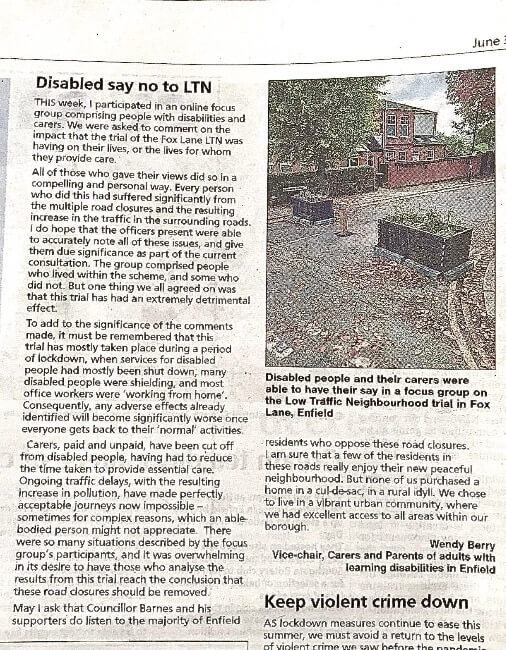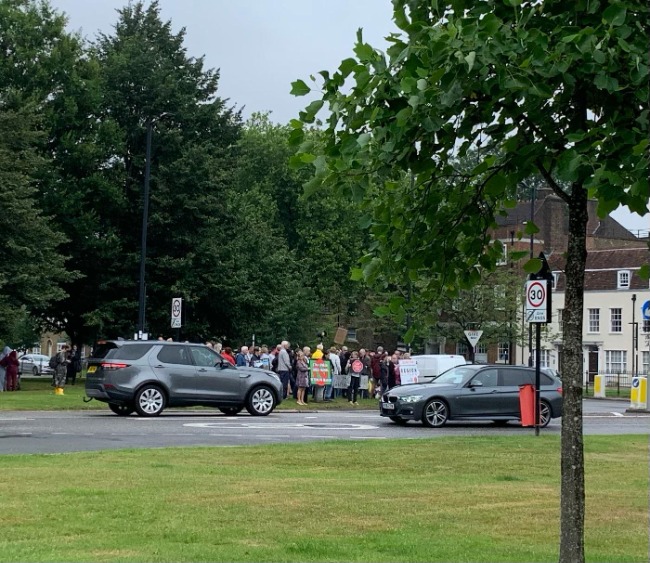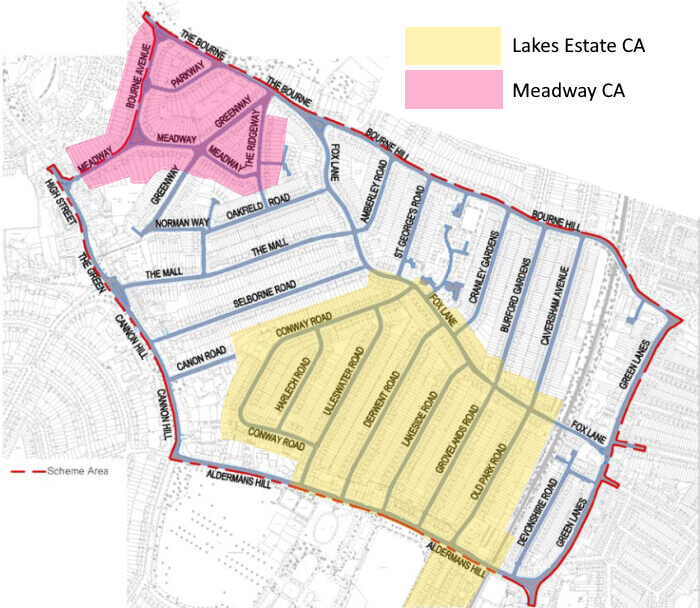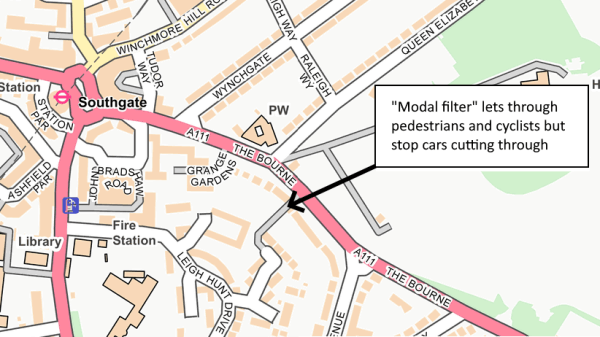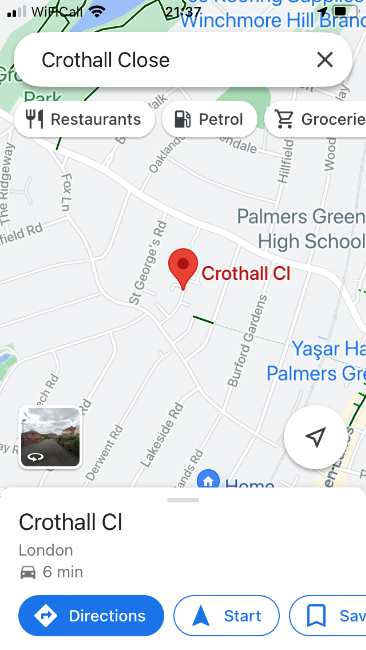
Enfield Council has published further information about how it will be assessing the success of the Fox Lane quieter neighbourhood. The consultation period has been extended until 11th July and a webinar to update residents has been scheduled for 26th May. Data on traffic levels and speeds on surrounding roads is currently being collected. There will be further monitoring of traffic levels in the summer. In the autumn the council will be reporting on all monitoring activity and the outcomes of public consultation and will take a decision to either make the scheme permanent or remove it.
Online consultation
The deadline for filling in the online consultation is now 11th July. You can fill in the survey more than once if you have changed your views or wish to add further comments.
Online event on 26th May (webinar)
The project team will brief about the monitoring and evaluation plan, consultation and engagement activities, the Equalities Impact Assessment, and an overview of next steps. There will be a presentation followed by an opportunity to ask questions. To participate you need to register by 5pm on 26th May.
New documents
The council has published two new documents and a further two will become available before the webinar on 26th May:
- Project rationale
- Monitoring plan
- Communications and engagement plan (not yet available)
- Approach to equalities impact assessment (not yet available)
There are also two new maps of monitoring points within the quieter neighbourhood and on nearby streets:
Project rationale
The project rationale document starts by placing the quieter neighbourhood scheme in the wider context of national, London-wide and borough policies and strategies:
The Fox Lane Area Quieter Neighbourhood is delivered in the context of local, regional and national policies and strategies that seek to respond to the climate emergency, reduce traffic congestionand increase levels ofphysical activity, and post-pandemic, to enable a green recovery. Nationally the government has committed to achieving net zero carbon emissions by 2050 and is supporting local authorities to encourage sustainable transport through its Active Travel Fund and the 2020 national walking and cycling strategy, Gear Change.
Across London, the 2018 Mayor's Transport Strategy (MTS) sets the overall direction and city-wide objectives for transport. The MTS set a target for 80% of all tripsto be made on foot, by bicycle or by public transport by 2041.
The 2019 Enfield Transport Strategy sets out how the council will deliver the MTS locally. Key objectives of the Enfield Transport Strategy include firstly the delivery of measures that encourage more walking and cycling, and secondly the promotion of safe, active and sustainable journeys to school. The council’s emerging Health and Wellbeing Strategy aims to reduce health inequalities and prioritises enabling active lifestyles. Creating an environment in which people feel comfortable walking and cycling for everyday journeys will help more people to be physically active.
Traffic monitoring

The monitoring plan document sets out what data the council will monitor and how it will do the monitoring.
Data and insights will be collected from a range of sources. Reporting on each of these sources will be brought together in a formal report which will outline the data collected, methodologies for any data analysis, our findings from the data, and provide links to further detail. The report will be published for anyone to access.
A range of qualitative data (based on review and judgement) and quantitative data (based on numbers) will be considered as part of the monitoring of Fox Lane Area QN.
It is important to note each focus area does not have a specific target to reach in order for the project to be evaluated as successful or not. This is because the project needs to consider and balance all of the various impacts of the scheme as a whole, and their alignment with the details provided in the Project Rationale document. The report will set out the detail and invite elected members to make a decision. Decisions will be subject to the normal process of review and scrutiny.
The document gives details of how the following will be monitored:
- Traffic speeds and volume
- Bus journey times
- Cycling counts
- Pedestrian counts
- Impact on emergency services
- Residents', businesses' and stakeholders' views
- Equality considerations
- Crime and anti-social behaviour
- Noise quality
- Air quality
- Healthy Streets Indicators
- Road collisions.

